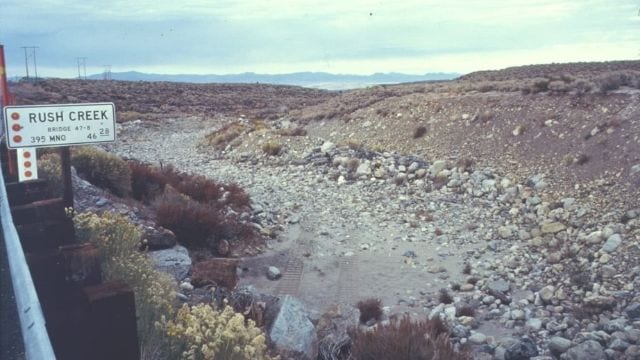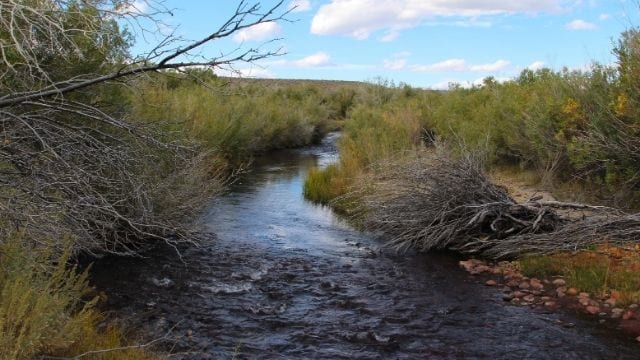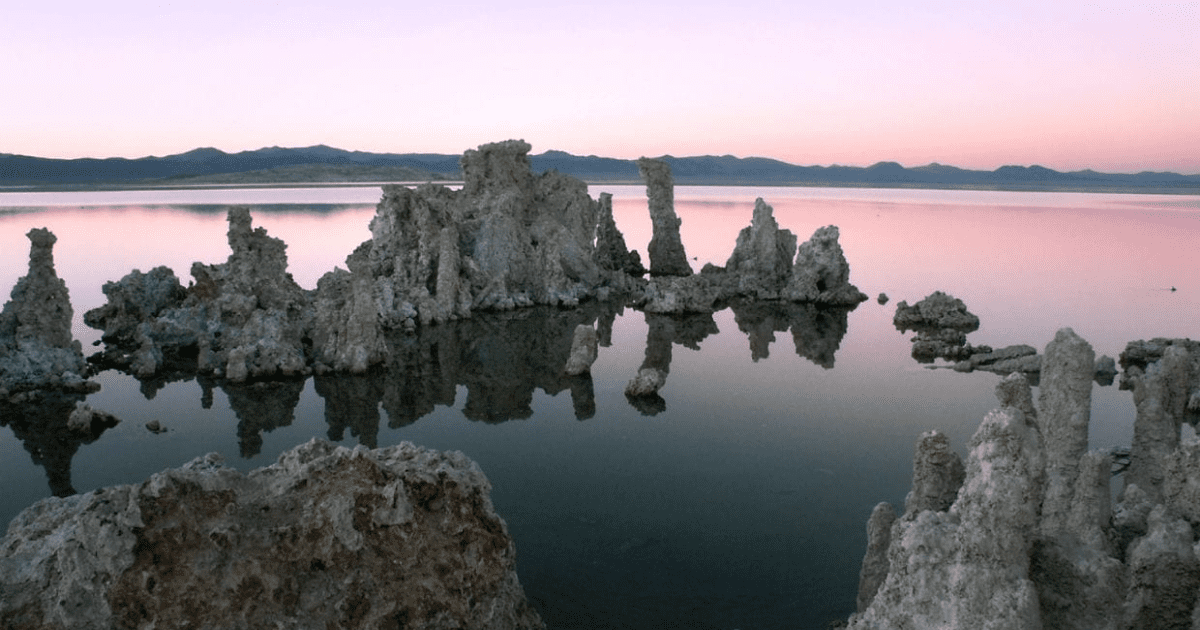Major Milestone Met to Protect Mono Basin Ecosystem
A major milestone in the effort to protect the Mono Basin ecosystem was reached last week. On October 1, 2021, the California State Water Board approved a comprehensive program to restore four key tributaries to Mono Lake, located in the Eastern Sierra near Yosemite. The Los Angeles Department of Water and Power (LADWP) will implement this program, as a condition of its water rights license to withdraw water for transport to its customers in the Los Angeles area.
The broad strokes of the restoration program, which includes improving conditions for native trout on Rush, Parker, Walker, and Lee Vining Creeks, were laid out in the 2013 Mono Basin Settlement Agreement between LADWP and California Trout (CalTrout), the Mono Lake Committee, and the California Department of Fish and Wildlife. The Water Board’s recent approval of the settlement ends decades of litigation, negotiations and controversy related to LADWP’s duties to restore twenty miles of fisheries and wildlife habitat in and around Mono Lake.

A dry Rush Creek. Photo courtesy of Mono Lake Committee.
Attorney Richard Roos-Collins of Water and Power Law Group, CalTrout’s legal representative since 1991, noted that, “LADWP will modernize its water storage infrastructure. It will implement measures to protect the creek ecosystem against the impacts of climate change. The parties will collaborate in further monitoring to assure the restoration program is working. This collaboration is essential here and elsewhere in California to resolve our crises in water supply and ecosystem protection.”
The controversy around Mono Lake goes back 80 years to 1941, when the state granted LADWP water rights to divert freshwater flow from key Mono Lake tributaries to support the growing Los Angeles metropolis. The result of the water diversion included lowering water levels at Mono Lake and the deterioration of its four tributary creeks, all prime trout habitat.
A series of high-profile, precedent-setting cases led to this resolution. In 1978 Mono Lake Committee and National Audubon Society brought landmark cases to challenge LADWP’s water rights under the public trust doctrine. In 1983 the California Supreme Court held that these water rights must be conditioned to avoid unnecessary harm to public trust resources, including the lake and the streams.
Several years later, CalTrout brought two landmark cases under Fish and Game Code 5937 to accelerate the process of amending LADWP’s water rights. Known broadly as CalTrout I and CalTrout II, the Mono Lake Cases not only restored four Eastern Sierra fisheries and began the process of refilling scenic Mono Lake, but they have also been instrumental in redefining the way dams are required to be managed and water allocated throughout the state. A recent article by North Coast Director Darren Mierau in CalTrout’s retrospective series, celebrating the organization’s 50th Anniversary, summarizes this long and winding road towards environmental protection of Mono Lake at https://caltrout.org50th/mono-lake.
In 1994, the State Water Board amended LADWP’s rights to reduce exports through an order known as Decision 1631, which set a sustainable water management level for Mono Lake and established major stream recovery goals. Decision 1631 required restoration of “functional and self-sustaining stream systems with healthy riparian ecosystem components” and “trout in good condition.”
The State Water Board appointed a group of stream scientists after issuing Decision 1631 to analyze conditions and define recommendations for optimizing the restoration benefits of flows to four Mono Lake tributary creeks. In 2010, the scientists presented their long-term flow recommendations, which formed the basis of the 2013 settlement agreement between the parties. The Mono Basin restoration program has been effective to date, with significant improvements in structure and function of the stream channels, creek-side vegetation and fisheries.
Alisa Ellsworth, Environmental Program Manager for California Department of Fish and Wildlife, emphasizes that, “CDFW fully endorses the State Water Board’s decision today, which will ultimately result in a long-term benefit for public trust resources related to the restoration of Rush, Lee Vining, Walker and Parker Creeks. This decision is the result of science and partnership coming together with a common goal that will benefit generations to come.”
The 2013 Mono Basin Settlement Agreement now adopted by the Water Board ended decades of controversy over the flows needed to restore the tributary creeks. The agreement lays out a plan to implement several actions, including upgrading Grant Dam and the subsequent delivery of long-term flows, an extensive monitoring program and oversight.

Rush Creek in 2015.
As CalTrout Legal and Policy Director Redgie Collins points out, “While the settlement terms are currently laid out piecemeal in multiple decisions and orders across 80 years, all of the terms will be stated in one document going forward. This will be a first in the history of our state’s Water Code, just as the Mono Lake Cases were the first time that municipal water rights were required to protect the public trust.”
The partnerships among the Conservation Parties have been critical to success of this process. “Thanks to the State Water Board’s leadership, a new era of science-based stream restoration is now underway that will benefit fish, wildlife, and all Californians” said Mono Lake Committee Executive Director Geoffrey McQuilkin. “We are proud to join together with Mayor Garcetti, the City of Los Angeles, and conservation partners to support and implement this bold phase of the programmatic effort to restore Mono Lake and its tributary streams.”
CalTrout and partners are committed to successfully implementing the settlement’s monitoring program. CalTrout’s Sierra Director Sandra Jacobson says that “The Mono Basin settlement is a prime example of the continuum of voices and action needed for long-term sustainability of fisheries and successful protection of our natural resources.”
Our organization recognizes this positive resolution for Mono Lake and its tributaries as one example of many around the state where science has led the way to create positive outcomes for fish, water and people. “Over a span of 5049 years, CalTrout has come to signify scientific credibility, a strong and respected voice on statewide water and fish policy, and an enduring legacy of on-the-ground projects and measurable outcomes,” concluded CalTrout Executive Director Curtis Knight.





